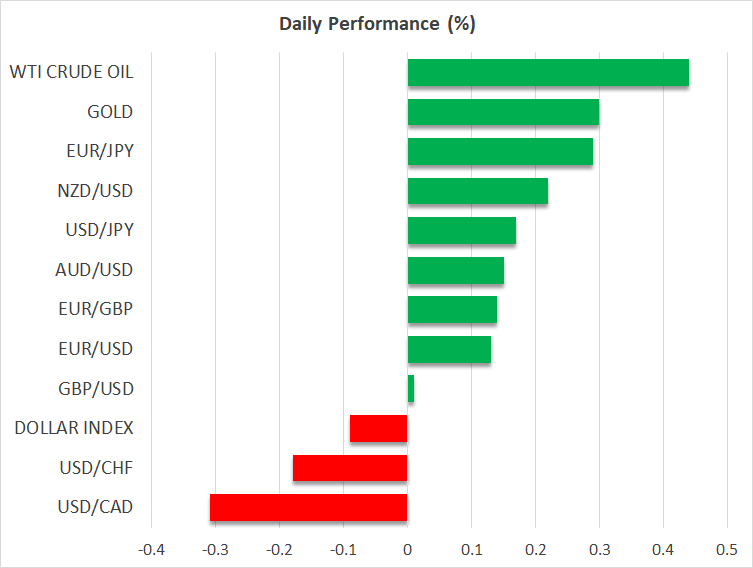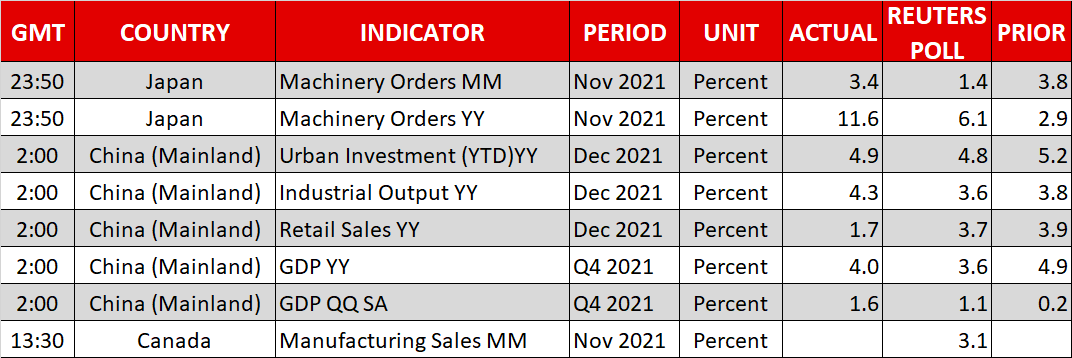- Dollar stabilizes as markets price in faster Fed rate hikes
- In contrast, China cuts interest rates to power up growth
- US markets will stay closed today, focus turns to BoJ meeting

Dollar unscathed by retail sales miss
Markets are growing increasingly confident that the Fed will raise interest rates four times this year to bring inflation under control. Even though the latest edition of US retail sales on Friday disappointed in a massive way, taking an axe to GDP growth estimates for the last quarter, that wasn’t enough to sink the dollar.
The silver lining was that consumption has been booming for so long that some reversion back to the pre-pandemic trend is only natural, especially when holiday spending might have skewed the picture. Instead, the dollar recovered, empowered by rising Treasury yields as traders placed more emphasis on some remarks by Fed officials that Omicron will be inflationary and that rate hikes are imminent.
A spike in survey-based measures of inflation expectations likely added fuel to the moves, along with the CEO of JPMorgan Chase (NYSE:JPM), who warned during the bank’s quarterly earnings call that there could be six or seven Fed rate hikes this year.
This seems like a stretch since the Fed doesn’t want to shock financial markets swimming in leverage, but it underscores that there’s still some room for market pricing to grow more hawkish, fueling the next leg of dollar strength. After all, the US labor market has arguably crossed the full employment rubicon already.
China cuts rates, markets yawn
In contrast, China has embarked on an easing cycle. The People’s Bank of China cut its key policy rate by 10 basis points today to juice up economic growth, which has taken a sharp hit thanks to the property crisis and draconian lockdown measures in some regions.
But the market impact was negligible, with only local stock markets reacting positively. The Australian dollar didn’t even notice, despite its status as a liquid proxy for China plays. Perhaps that’s a signal that the rate cut wasn’t big enough to move the needle for growth.
Beyond growth risks, another crucial question is whether the recent lockdown measures across China will deal another blow to distressed supply chains, keeping global inflationary pressures elevated for longer.
Yen softens ahead of BoJ meeting
The next big event for markets will be the Bank of Japan’s decision early on Tuesday. No policy changes are expected, although the Bank could strike a slightly more optimistic tone, drawing confidence from improving economic data and the enormous spending package the government is about to unleash.
But don’t expect the BoJ to signal rate hikes are coming anytime soon. Consumption remains weak, wage growth is anemic, and Omicron is sweeping through the country. The inflation rate speaks for itself. It is barely positive despite the mayhem in supply chains and soaring energy prices, so there is no ‘organic’ inflation.
With the BoJ likely to be the last major central bank to raise interest rates this cycle, the outlook for the yen remains negative from a relative monetary policy perspective. That said, any losses might be smaller than last year if volatility episodes in the markets become more frequent, allowing defensive assets like the yen to enjoy brief periods of strength.
As for today, US markets will remain closed for the Martin Luther King holiday. This means that liquidity will be thinner than usual, so any news could have an outsized impact. 
